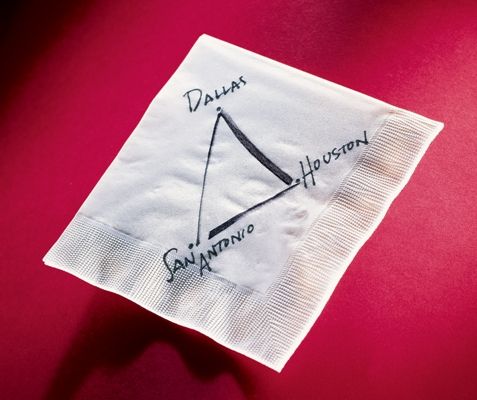The Power of Visual Thinking
In 1966, a Texas pilot drew a triangle on the back of a napkin and changed aviation forever.
Rollin King was meeting with his lawyer Herb Kelleher at the famed St. Anthony Hotel in San Antonio.
They were discussing the potential for starting a new carrier in the heavily regulated airline industry.
Due to federal oversight, it was almost impossible for new airlines to break into the market.
But King had an idea: Just like Pacific Southwest Airlines in California, a small carrier could specialize in short-haul intrastate flights enough to get a foothold.
Kelleher needed convincing.
So, King grabbed a napkin and a pen and drew a triangle.
On the top, he wrote ‘Dallas’ and on the other two points he wrote ‘San Antonio’ and ‘Houston’.
“Herb, let’s start an airline,” King said.
“Rollin, you’re crazy,” replied Kelleher. “Let’s do it!”
With a simple diagram, Southwest Airlines was born.
– – –
In 1987, political scientist Herbert Simon published a paper titled ‘Why a Picture Is (Sometimes) Worth 10,000 Words’.
Simon compared side-by-side a purely symbolic approach to a problem with an approach using a diagram.
The comparison was striking.
While the symbolic approach ran on for several pages, the diagram took up less than one page.
All of the information in the long proof was there, but it was condensed, easier to read and to understand.
As philosophy professor Patrick Grim put it, “When it comes to information processing and pattern recognition, nothing beats our visual system.”
– – –
Hollywood graphic designer Saul Bass once said “Design is thinking made visual.”
In that process, design becomes one of the most powerful tools we have.
Steve Jobs summed up the importance of visual thinking, saying, “Design is not just what it looks like and feels like. Design is how it works.”
Rollin King’s diagram was simple, but it conveyed all the information of how a revolutionary business would work.
The result was one of the great companies of the last 50 years.




